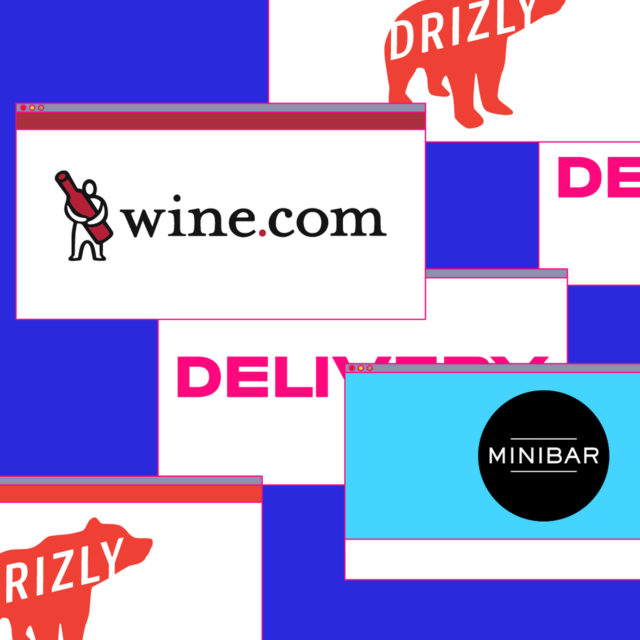Americans are spending more time than ever at home right now, with trips outdoors limited to only the absolutely necessary. While alcohol businesses, including wine and liquor stores, wineries, breweries, and distilleries, have been deemed “essential” in states where work restrictions are in effect, U.S. drinkers are increasingly making their alcohol purchases online.
Over the past two weeks, online retailers like Wine.com, and third-party apps that enable the delivery of wine, beer, and spirits, including Drizly and Minibar, have seen a surge in sales, with some reporting as much as triple-digit growth.
For mobile application Minibar, the first spike in orders arrived nearly two weeks ago, on Wednesday, March 11. On the same day that the World Health Organization officially declared Covid-19 a “pandemic,” Minibar saw a 27 percent increase in orders compared to the Wednesday prior. By Thursday, the increase hit 80 percent.
Don't Miss A Drop
Get the latest in beer, wine, and cocktail culture sent straight to your inbox.The sales spike on Friday, March 13 was considerably lower — just 14 percent — but this was because corporate orders, which usually account for a large slice of Fridays’ sales, slumped to almost nothing, explains Lindsey Andrews, Minibar’s CEO and co-founder.
By the start of last week, Minibar’s growth hit triple digits. Both Monday, March 16 and Tuesday, March 17 saw increases of over 100 percent compared to one week before. According to Andrews, users are placing their orders earlier in the day and have increased their spend by around 20 percent on average.
The wine brands enjoying the strongest sales include Oyster Bay, Veuve Clicquot, Kim Crawford, and The Pinot Project, while Tito’s Vodka, Bulleit, and Casamigos lead the spirits category. For beer, Minibar users have been thirsty for a mixture of hard seltzer and lighter lagers, with White Claw, Corona, and Bud Light the most popular right now.
“White Claw continues to be a top seller on Drizly,” says Liz Paquette, Drizly’s head of consumer insights. Wine and spirits sales are currently growing two times faster than beer, however, and both enjoy much greater portions of Drizly’s overall sales, she explains.
Drizly also saw its first spike two weeks ago. On Thursday, March 12 — the same day New York Gov. Andrew Cuomo announced restrictions on mass gatherings and cut restaurant and bar capacities by 50 percent — sales on the platform surpassed those of New Year’s Eve. Typically, Dec. 31 is “far and away the largest single day of the year for us,” Paquette says.
Things haven’t slowed down since. By Monday, March 16, when Cuomo limited New York’s bars and restaurants to takeout and delivery only, and multiple states around the country followed suit (if they hadn’t already imposed them), Drizly’s business was increasing six times faster than its normal growth rate. By the end of that week, that growth was more like 10 times above average.
While the sales increases are remarkable, Paquette insists the No. 1 priority remains the health and safety of Drizly’s employees, retail partners, and customers.
To make the delivery process safer, Drizly is encouraging drivers and users to designate an outdoor spot where handovers can take place. The company is also asking drivers to scan users’ IDs without touching them, and urging its retail partners to consider foregoing the need for signatures. (To make the latter more appealing, Drizly is providing retailers with fraud protection insurance free of charge.)
Wine.com founder and executive vice president Michael Osborn is also focusing on safety at a time of much greater than average sales.
The website’s orders are currently triple what they would be at this time of year, and closer represent the holiday season than a typical March, Osborn says. To meet the demand, and ensure that warehouse employees are not overworked, Wine.com is currently increasing its workforce. All office staff have been working from home for more than two weeks now.
Osborn says the company’s six warehouses — located in Massachusetts, New York, New Jersey, Florida, Texas, and California — are large enough that employees can easily pack and ship huge orders while practicing safe social distancing.
While order totals are up, the average spend per bottle on Wine.com has decreased slightly over the past two weeks, but Osborn thinks this may represent an increase in alcohol consumption rather than stockpiling.
Wine.com customers are currently spending $25 per bottle on average, down from the typical level of $32. But this is still much higher than the average price most Americans spend per bottle. Last year, almost 70 percent of the wine (volume) sold in the U.S. through November 2019 retailed at less than $9, according to the Silicon Valley Bank.
“I wouldn’t call it pantry loading,” Osborn says. “But I would say folks are serious about having wine every night for their meal.”
In addition, the type of wine consumers are buying from Wine.com reveals a heartening takeaway: Sales are disproportionately up for Italian wines on the site, which was the epicenter of Covid-19 cases in the past two weeks. “The growth of Italian wines is bigger than the growth of our business right now,” Osborn says. “Which is a good thing: People are tipping their hat.”
This story is a part of VP Pro, our free content platform and newsletter for the drinks industry, covering wine, beer, and liquor — and beyond. Sign up for VP Pro now!
